
From easy maintenance and a beautiful appearance to outstanding durability and strength, there are plenty of reasons to consider using stainless steel in marine applications and environments.
You’ll find it used in everything from offshore platforms and desalination facilities to more cosmetic applications, such as ornamental tubing and boat accessories.
In this guide, we’ll look at why stainless steel is so popular for marine use and some of the most common applications for this popular metal alloy.
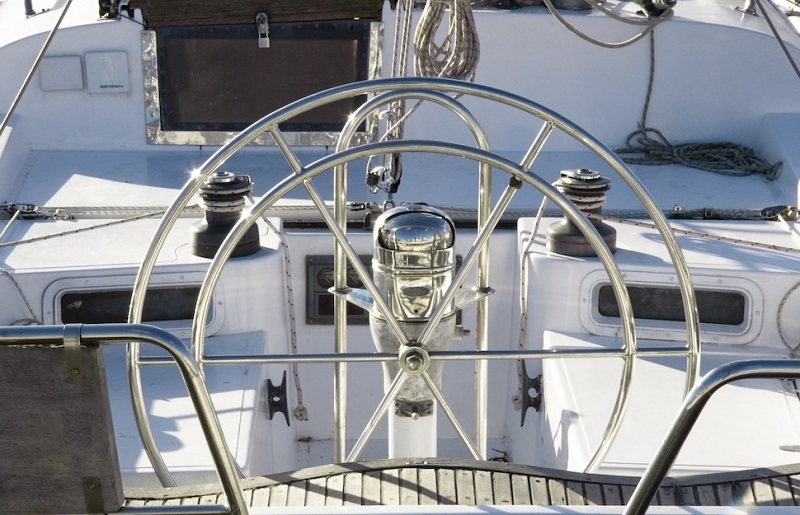
Why use stainless steel in marine application?
Before we explore typical uses for stainless steel in marine applications, it’s essential to understand why stainless steel is such a popular choice.
Corrosion resistance is undoubtedly one of the critical reasons why many industries rely on stainless steel components.
Depending on the exact grades of stainless in use, they can even provide excellent resistance in saltwater or acidic environments where many other metals would quickly degrade, leading to component failure or poor visual appeal.
This benefit isn’t limited to pipes, tanks, or other processing systems.
It’s also applicable for structural and decorative elements, such as ornamental tubing, handrails, handles, grab bars, flooring, drainage grates, and more.
In these cases, stainless steel doesn’t simply offer outstanding durability and long service life.
It also provides exceptional flexibility in customizing the appearance of your product, with stainless steel finishes ranging from dull mattes to mirror-finish glosses.
Typical applications for stainless steel in marine environments
Stainless steel usage in docks and marinas
Whether dealing with lakeside or riverside docks for recreational use or larger commercial docks, stainless steel often plays important roles in the construction and safe operation of docks and marinas worldwide.
Stainless steel, particularly grade 316—sometimes called marine grade stainless steel—can be found in structural and decorative applications in many docks and marinas.
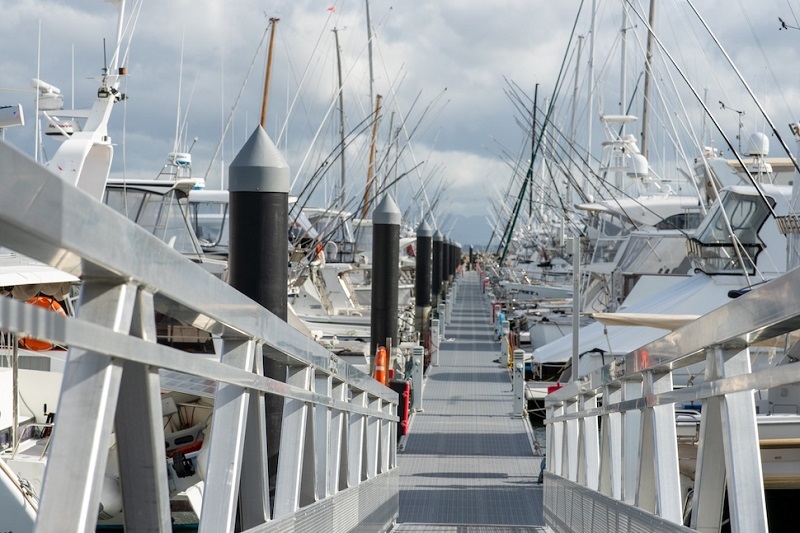
Internally, stainless steel blind bolts, thru-rods, washers, nuts, and bolts can help support the overall dock structure regardless of the materials used.
On the surface, you might also find stainless steel trim, stainless steel slats used as flooring, ornamental tubing used for handrails and supports, and even purely decorative elements such as placeholding tags or signage.
Stainless steel ship and boat componets
From massive commercial freighters on the ocean to pontoon boats on the lake, you’ll find that stainless steel is a prevalent material for components on ships and boats of all sizes.
Typical uses include piping, pulpits, hinges, propeller shafts, railings, accents, fasteners, and shackles.
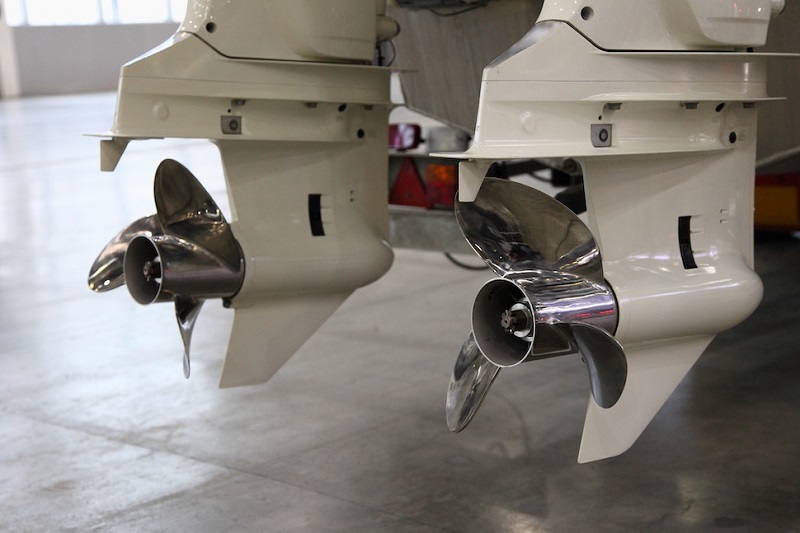
Stainless piping is increasingly common as a replacement for painted carbon piping for new ship builds. Since stainless piping doesn’t require a second painting process it is a time and installation cost savings over carbon piping alternatives. Lifetime operational costs are also lower due to enhanced durability and reduced maintenance compared with carbon piping.
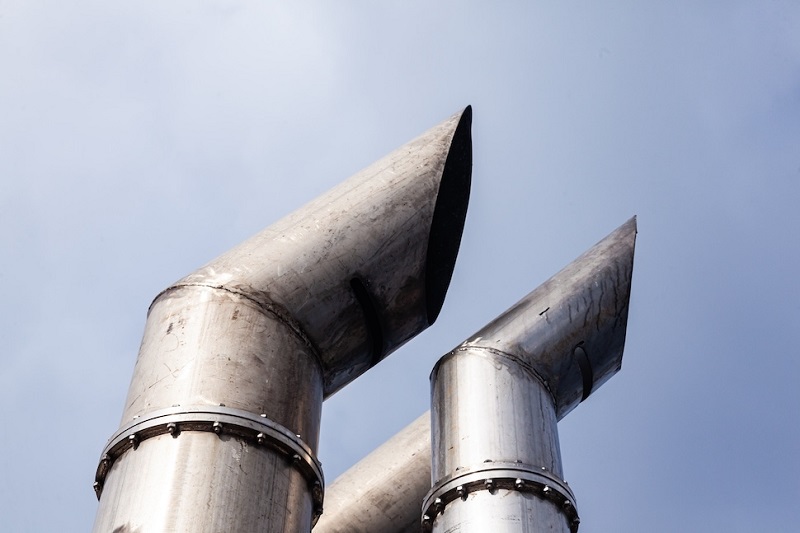
However, it can also be used for hull plates—both as a solid piece or as hull cladding—or for other larger items like stacks, engine room components, or masts, depending on the boat or ship's design.
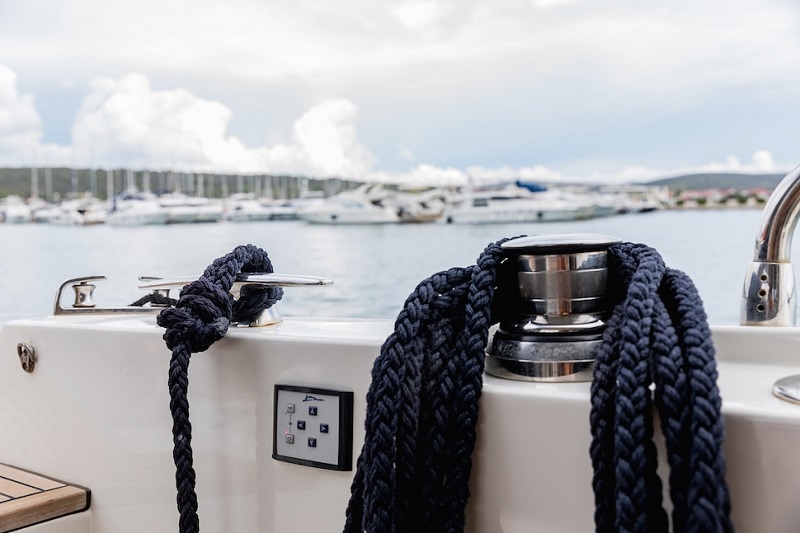
As with most stainless steel products, choosing the exact grade of steel used from component to component will provide an optimal balance of corrosion resistance, performance, and cost to help meet safety and budget requirements.
Offshore platforms and processes
There are few harsher environments for metal parts and components than you’ll find on offshore platforms.Between the constant environmental exposure, the regular forces from all directions above, below, and at the surface level, and the saltwater environment, corrosion and component degradation are persistent threats.
Combine this with platforms that are largely isolated, stand hundreds of feet above the water, and weigh tons and you have a situation where part and component failure can become catastrophic very quickly.
Stainless steel is the perfect solution to most of these concerns and sees extensive use in platforms, from larger items like structural supports and catwalks to smaller things like handrails, platforms, and signage.
South Korea imposes AD duties on stainless steel flat-rolled products
2021-08-05Reasons of Cold Rolled Stainless Steel Strips Coiling Defects
2022-07-12Motor rotor with non-oriented silicon steel sheet thickness is not the thinner the better
2024-03-29Electrical steel production capacity is growing rapidly, and supply and demand are unbalanced
2023-12-05Market situation of silicon steel in the first week of December 2023
2023-12-13Demand for electrical steel for UHV power grid projects
2024-02-21






